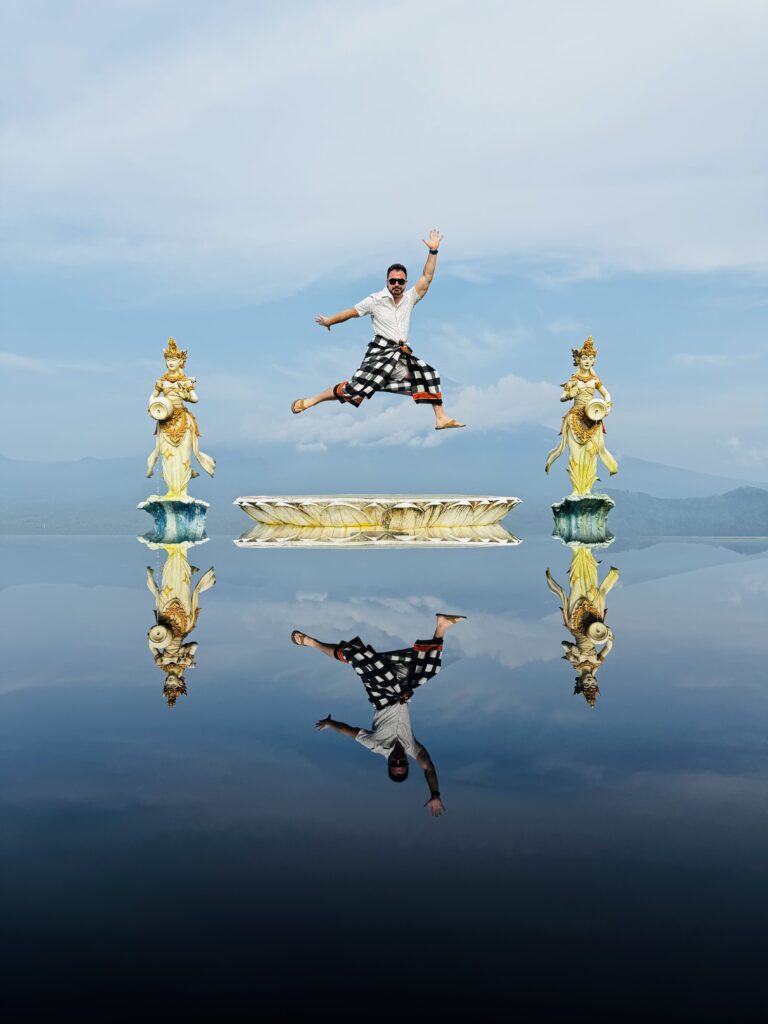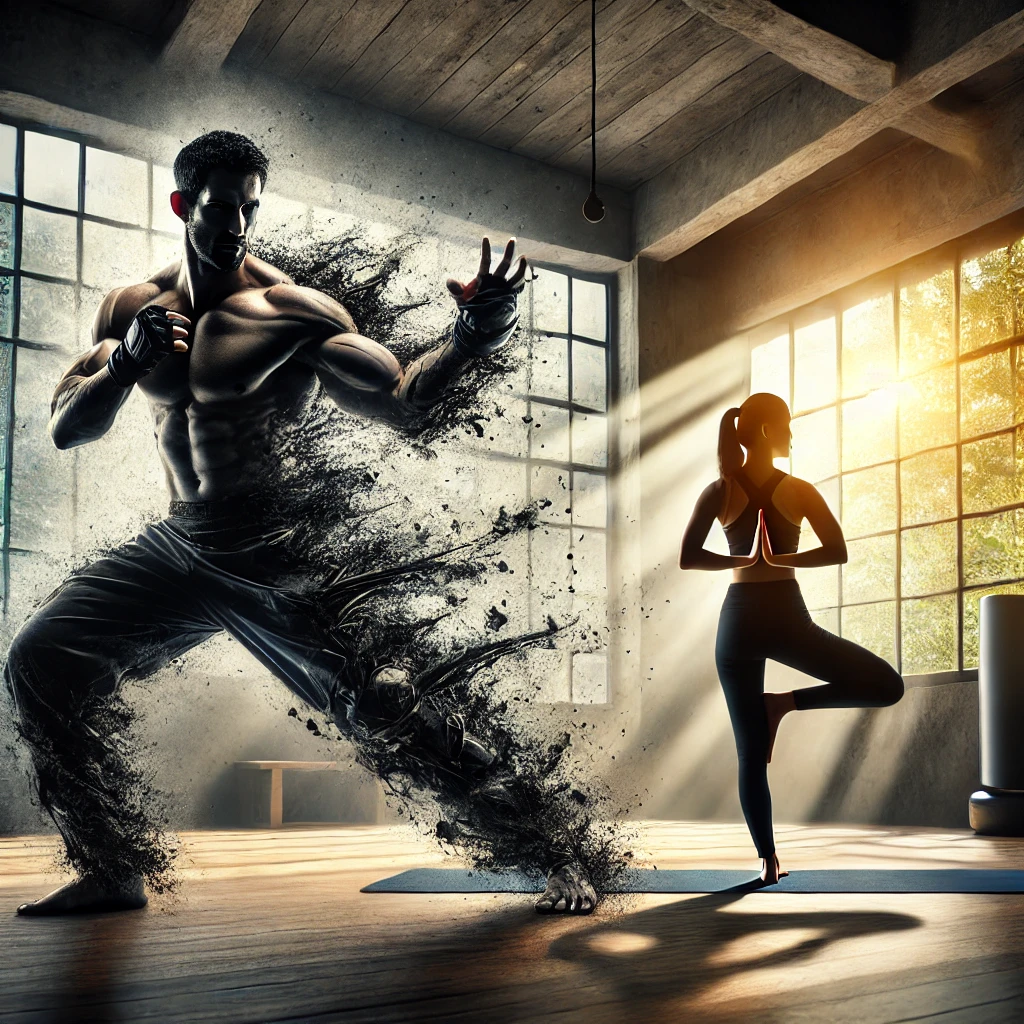In today’s fast-paced world, finding ways to balance the mind and body is crucial for personal well-being. As a fitness enthusiast, I, Michael Stoian, have found two practices that not only challenge me physically but also nurture mental resilience: Krav Maga and Yoga. At first glance, these two disciplines may seem worlds apart—one is a self-defense system designed for intense, high-stakes situations, while the other is a peaceful practice rooted in mindfulness. However, combining the two offers a unique synergy that promotes strength, awareness, and inner calm.

Krav Maga: Strength, Speed, and Self-Defense
Krav Maga is a martial art developed for the Israeli military, known for its practical, no-nonsense approach to self-defense. It’s not about fancy moves or showing off technique—Krav Maga is designed for real-world situations where quick thinking, speed, and strength are necessary to protect yourself.
Key Benefits of Krav Maga
- Physical Power: Krav Maga builds strength, agility, and endurance. The focus on quick, effective movements means you’ll work every muscle in your body during training.
- Mental Toughness: One of the biggest takeaways from Krav Maga is the mental resilience it builds. The training is intense and designed to simulate stressful, chaotic situations, teaching you to stay calm and focused under pressure.
- Practical Self-Defense: Unlike many martial arts, Krav Maga is designed specifically for real-world application. It prepares you for everyday scenarios, making you more aware and confident in public spaces.
Core Elements of Krav Maga
- Close Combat: Krav Maga emphasizes close-quarters fighting, where strikes, grapples, and defensive maneuvers can neutralize a threat quickly.
- Situational Awareness: You learn to be hyper-aware of your surroundings, which is crucial in both self-defense and daily life. This awareness can help you avoid dangerous situations altogether.
- Instinctive Movements: Rather than memorizing complex forms, Krav Maga teaches instinctive reactions, using the body’s natural movements for maximum efficiency.
Yoga: Flexibility, Focus, and Inner Peace
On the opposite end of the spectrum is yoga, a practice that has been around for thousands of years. Unlike the high-energy, fast-paced nature of Krav Maga, yoga is about finding stillness, control, and harmony within yourself.
Key Benefits of Yoga
- Flexibility and Strength: Yoga is known for increasing flexibility, but it’s also excellent for building strength, particularly in the core and stabilizing muscles.
- Mindfulness and Calm: Through breathwork and meditation, yoga helps calm the mind and reduce stress, promoting mental clarity and emotional stability.
- Body Awareness: Yoga improves your awareness of how your body moves and functions, leading to better posture, balance, and overall physical health.
Core Elements of Yoga
- Breathing Techniques (Pranayama): Breath control is a fundamental aspect of yoga, helping to anchor your mind and body. It’s also a powerful tool for managing stress and anxiety.
- Poses (Asanas): From simple stretches to complex inversions, yoga poses help increase flexibility, strengthen muscles, and improve body alignment.
- Meditation: Meditation is the practice of quieting the mind, focusing inward, and achieving a sense of peace. It pairs perfectly with the physical practice of yoga for holistic well-being.
The Synergy Between Krav Maga and Yoga
Although Krav Maga and yoga are drastically different, practicing them together creates a powerful synergy. Where Krav Maga builds mental toughness and physical power, yoga encourages flexibility, balance, and mindfulness. Together, they provide a comprehensive workout for both the body and mind.
Complementary Benefits
- Flexibility Meets Strength: The strength and agility you gain from Krav Maga can be complemented by the flexibility and body awareness you develop through yoga. This combination reduces the risk of injury and improves overall athletic performance.
- Calm in Chaos: Krav Maga teaches you how to stay calm under pressure, while yoga deepens that ability by training your mind to stay present and centered. This mental fortitude is valuable both in self-defense scenarios and daily life stress.
- Recovery and Balance: The intensity of Krav Maga can take a toll on your body. Yoga provides the perfect counterbalance, helping to stretch and relax muscles, while also aiding in recovery and reducing soreness.
How to Incorporate Both Into Your Routine
For me, Michael Stoian, the key to combining Krav Maga and yoga is finding balance in my fitness routine. Here are some tips for blending these two practices:
Alternate High and Low Intensity
Since Krav Maga is highly demanding, it’s essential to allow your body time to recover. I recommend alternating between high-intensity Krav Maga sessions and lower-intensity yoga sessions throughout the week. This way, you get the benefits of both without overtraining.
Use Yoga as a Warm-Up or Cool-Down
Yoga can be incorporated before or after Krav Maga practice. A yoga-based warm-up helps stretch and prepare muscles for the explosive movements in Krav Maga, while post-training yoga can cool down your body, release tension, and prevent stiffness.
Focus on Breathwork in Both Disciplines
One of the biggest connections between yoga and Krav Maga is the importance of breathing. In yoga, breath control (pranayama) helps calm the mind and body. In Krav Maga, controlled breathing is essential to maintaining focus during high-intensity situations. Practicing breath control in both disciplines will enhance your endurance, focus, and ability to manage stress.
Conclusion: Finding Harmony in Opposites
At first glance, Krav Maga and yoga seem like an odd pairing—one rooted in combat, the other in peace. However, I’ve found that practicing both has enriched my physical fitness and mental well-being in ways I never expected. The balance of strength and flexibility, aggression and mindfulness, creates a well-rounded approach to health.
I encourage anyone interested in fitness to explore both disciplines. You might be surprised at how complementary they are and how the skills learned in one can enhance the other.
Michael Stoian’s Favorite Yoga Pose After Krav Maga
After an intense Krav Maga session, my go-to yoga pose is Pigeon Pose. It’s excellent for stretching the hips, which often get tight from the explosive movements in Krav Maga, and it helps release any built-up tension in the lower body.
Stay connected with Michael Stoian on Twitter, Instagram, Facebook, and LinkedIn for the latest updates and insights.

